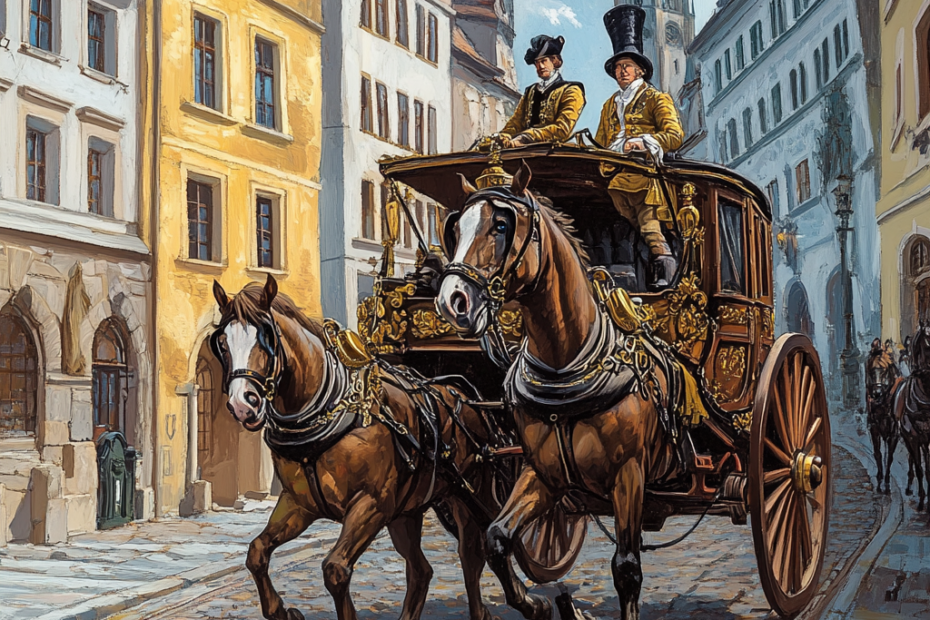The Thurn and Taxis Palace, also known as St. Emmeram Palace, is a significant historical and architectural landmark located in Regensburg, Germany. It serves as the residence of the princely family of Thurn and Taxis and is renowned for its grandeur and historical importance.
Historical Background
The origins of the Thurn and Taxis Palace date back to the early 12th century. It was initially part of the St. Emmeram Abbey, one of the most significant Benedictine monasteries in Europe. The abbey’s roots can be traced to around the year 800 when Benedictine monks settled near the grave of St. Emmeram, establishing a monastic tradition that lasted over a thousand years.
In 1812, following the secularization of church properties, the Thurn and Taxis family acquired the monastery complex as compensation from the Kingdom of Bavaria. Over the next century, extensive renovations transformed the site into the residence of the princely family. The palace as it stands today was largely completed by the end of the 19th century.
Visiting the Palace
Visitors to the Thurn and Taxis Palace can explore various parts of the complex, including:
– The Princely State Rooms: These rooms showcase the opulent lifestyle of the Thurn and Taxis family, featuring Rococo and Baroque architecture.
– The Cloister: A medieval structure that offers a glimpse into the monastic life of the past.
– The Treasury and Stables: These areas display artifacts and historical items related to the family’s history and their role in the development of the postal system.
Guided tours are available in both German and English. The state rooms and cloister can only be accessed through these tours, which are scheduled several times daily.
Cultural Events
The palace is not only a historical site but also a cultural hub. It hosts the annual Thurn and Taxis Castle Festival, featuring international music performances, and a renowned Christmas market that attracts visitors from far and wide.
The Thurn and Taxis Palace offers a unique blend of history, culture, and architecture, making it an inspiring destination for conference attendees and tourists alike.
The role of Thurn and Taxis in the development of the postal system
The Thurn and Taxis family played a central role in the development of the European postal system. Their history is closely linked to the establishment of an efficient communication system in Europe that has lasted for centuries.
Early beginnings and establishment
The origins of the Thurn and Taxis postal service date back to the late 15th century. Franz von Taxis, a member of the family, is considered a pioneer of the modern postal system. In 1490, he began to build a courier network that stretched across large parts of Europe on behalf of the Habsburg dynasty. This network enabled faster and more reliable communication between the European capitals and laid the foundation for the postal system that would later develop.
The Imperial Postal Regale
A significant milestone in the history of the Thurn and Taxis postal service was its appointment as the Imperial Postregal. Imperial decrees from 1595 and 1615 declared the postal service to be an inheritable fief of the House of Taxis. This made the Thurn and Taxis postal service a central component of the imperial postal system and gave it a monopoly position in the Holy Roman Empire.
Expansion and operation
Over the centuries, the Thurn and Taxis postal network continued to expand. The family not only operated the letter delivery service, but also passenger transport and the publication of newspapers. The postal services were used by numerous German states that did not have the resources to build their own postal network. These included the Grand Duchy of Hesse, Nassau and the Hanseatic cities of Hamburg, Bremen and Lübeck.
The end of the Thurn and Taxis postal service
With the fall of the Holy Roman Empire in 1806, the Thurn and Taxis postal service lost its monopoly. Nevertheless, the company remained active in the German Confederation of the 19th century, as many smaller states continued to rely on its services. The final transfer of postal services to the Prussian state took place after the German War of 1866, when the entire Thurn-and-Taxis postal system was integrated into the Prussian state on 1 July 1867.
Legacy and significance
The Thurn and Taxis postal service left a significant legacy in the history of postal services. It contributed significantly to the development of a Europe-wide communications network and was a pioneer in the establishment of modern postal services. The innovative strength and efficiency that characterized the company had a lasting impact on European postal services and remain an important part of European history to this day.
